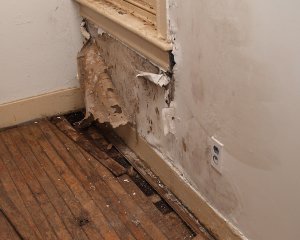6 Factors Behind Common Water Leaks in Homes and Solutions
6 Factors Behind Common Water Leaks in Homes and Solutions
Blog Article
We've come across the article pertaining to Common Water Leaks In House below on the internet and thought it made good sense to discuss it with you on this site.

Leaks not only cause waste of water but can also create unnecessary damage to your residence and also advertise undesirable organic growth. Water leakages may go unnoticed considering that most of the pipework in our home is concealed. By recognizing as well as looking for day-to-day situations that trigger leaks, you can shield your house from future leaks and unneeded damages. Today, we will take a look at six leakage triggers that may be causing your pipes to trickle.
Trespassing origins
Many water leaks begin outside the residence rather than inside it. You may notice wet patches or sinkholes in your backyard, and that may suggest that tree roots are getting into water lines creating water to permeate out.
Rusty water systems
This could be the cause of discoloration or warping on your water pipelines. If our plumbing system is old, take into consideration changing the pipes because they are at a greater threat of rust than the newer models.
Defective Pipeline Joints
The point at which your pipelines attach is regularly the weakest web link in the waterline. Pipe joints can wear away in time, leading to water leakages. The majority of pipe joints are not easily noticeable. If you have loud pipes that make ticking or banging noises, particularly when the warm water is turned on, your pipe joints are probably under a great deal of pressure. It is advisable to have your plumber check your system once a year.
Instantaneous temperature level changes.
Severe temperature modifications in our pipelines can trigger them to broaden and get all of a sudden. This development as well as tightening might create fractures in the pipelines, especially if the temperature are below freezing. If you kept an eye on how your plumbing works, it would certainly be best. The visibility of the formerly pointed out situations regularly indicates a high danger.
Poor Water Connectors
At times, a leakage can be triggered by loose hoses as well as pipelines that supply your home appliances. Most of the time, changing is what causes the loose water Links. You could locate in the case of a cleaning device, a pipe may spring a leakage as a result of trembling throughout the spin cycle. In case of a water connections leakage, you may observe water running directly from the supply line or puddles around your appliances.
Blocked Drains
Blocked drains may be irritating and also inconveniencing, yet they can occasionally wind up triggering an overflow bring about rupture pipes. Keep removing any type of materials that might go down your drains that can clog them to stay clear of such troubles.
All the above are causes of leakages yet not all water leaks result from plumbing leaks; some leakages might come from roof leaks. All leakages ought to be repaired promptly to stay clear of water damage.
Leaks not only trigger waste of water yet can also create unnecessary damage to your residence and also promote undesirable organic growth. By recognizing and looking for everyday situations that cause leaks, you can shield your house from future leaks as well as unnecessary damage. Today, we will look at six leak triggers that may be creating your pipelines to trickle.
At times, a leakage can be triggered by loosened tubes and also pipelines that provide your devices. In instance of a water links leakage, you might notice water running directly from the supply line or pools around your devices.
How To Check For Water Leak In Your Home
How To Check for Leaks
The average household's leaks can account for nearly 10,000 gallons of water wasted every year and ten percent of homes have leaks that waste 90 gallons or more per day. Common types of leaks found in the home are worn toilet flappers, dripping faucets, and other leaking valves. These types of leaks are often easy to fix, requiring only a few tools and hardware that can pay for themselves in water savings. Fixing easily corrected household water leaks can save homeowners about 10 percent on their water bills.
To check for leaks in your home, you first need to determine whether you're wasting water and then identify the source of the leak. Here are some tips for finding leaks:
Take a look at your water usage during a colder month, such as January or February. If a family of four exceeds 12,000 gallons per month, there are serious leaks.
Check your water meter before and after a two-hour period when no water is being used. If the meter changes at all, you probably have a leak.
Identify toilet leaks by placing a drop of food coloring in the toilet tank. If any color shows up in the bowl after 10 minutes, you have a leak. (Be sure to flush immediately after the experiment to avoid staining the tank.)
Examine faucet gaskets and pipe fittings for any water on the outside of the pipe to check for surface leaks.
Undetected water leaks can happen without the home or business owner even realizing. If you suspect a water leak, but not able to find the source. It is time to contact a professional water leak detection service, The Leak Doctor.
How To Find a Water Leak In Your Home
https://www.leakdoctor.com/blog/How-To-Check-For-Water-Leak-In-Your-Home_AE197.html

Do you appreciate reading about Most Common Causes of Leaky Pipes? Make a comment down below. We'd be glad to see your thoughts about this posting. We hope that you come back again in the near future. Sharing is nice. You won't know, you might be helping someone out. We love reading our article about Most Common Causes of Leaky Pipes.
Book Your Installation Report this page